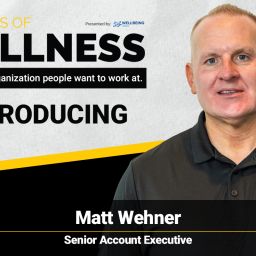Preventing workplace violence is a nationwide problem in the United States, and statistics show that healthcare workers are the most vulnerable. The Occupational Safety and Health Administration (OSHA) reports that the healthcare industry experiences four times the national average of violent incidents in the workplace.
Even worse–80% of worker injuries resulting in missed workdays were caused by patients. This leaves providers in a difficult position where they must protect themselves from the people they’re trying to help. In order to prioritize their staff’s well-being, healthcare organizations need to enact strategic proactive and reactive measures to avert crises and ensure everyone’s safety.
[RELATED: COVID-19 Resources for Healthcare Providers, Families, and Leadership]
UNDERSTANDING THE PROBLEM
To fix the problem of workplace violence we must first understand what’s happening. According to the National Institute for Occupational Safety and Health, there are four types of workplace violence:
- Type I violence has criminal intent attached. The perpetrator has no affiliation with the business or any employees and typically happens in connection with a robbery or other crime. Type I violence is least prevalent in healthcare, but can still occur.
- Type II violence encompasses patient-on-worker incidents, including family members and visitors of patients. Type II violence is the most common in healthcare. It’s especially prolific in emergency rooms, psychiatric treatment facilities, penal healthcare, and geriatric care.
- Type III violence occurs between employees. While it is referred to as lateral violence, it is most often aimed at people lower on the corporate ladder, such as supervisor to employee violence. It can also occur after a romance between coworkers. Bullying, unfair treatment, and other humiliating or demeaning acts also fall under type III violence.
- Type IV violence involves a personal relationship between the attacker and victim, but not the workplace. This occurs when a spouse, ex-lover, or family member comes to attack an employee. Hospital workers should be well versed in any issues dealing with domestic violence.
Researchers at Reuters Health recently studied triggers of patient-on-employee assaults. After studying 214 incidents over the course of a year from seven hospitals, they discovered three main causes:
- Cognitive impairment, such as intoxication or mental problems. In many of these cases the patient was attempting to leave.
- Close proximity. Many incidents occurred when the worker was working close to the patient, hooking equipment to them, moving them, injecting them with needles, etc.
- Situational. The remaining incidents occur during transitions. This includes admissions or discharge, giving information to patients, or intervening with a violent patient.
With this understanding of the various types of violence and their triggers, we can begin to further examine the issue and develop strategic initiatives to reduce the likelihood of an incident.
Stopping Healthcare Violence
Unfortunately, there’s no quick fix to ending violence in hospitals. It takes continuous diligence and work, but it’s necessary to remove workplace hazards and improve the well-being of providers. Healthcare leaders have a responsibility to make patient and worker safety a priority in the organization.
Risk factors can be both organizational and situational. Poorly lit parking lots, inadequate security personnel, operating in high-crime areas, and poor design are among the problems. Understaffing is also a major issue, as workers are pulled in many directions while patients are overcrowded.
Violence prevention programs in healthcare must include five key elements to succeed:
1. Full Organizational Support and Participation
Management needs to fully support workplace safety initiatives, and all staff should be involved. Duties and responsibilities should be clearly delegated to ensure critical support is always available when needed. Committees should be set up, if necessary, to ensure full organizational compliance.
Everyone–including security, receptionists, transcriptionists, technicians, janitors, cafeteria staff, and anyone else–needs to participate for the program to succeed.
2. Comprehensive Facility Safety Assessments
The best way to stop potential threats is to recognize them before they happen. Your team should be routinely performing a step-by-step hazard identification. This includes analyzing procedures, personnel, and any other possible safety vulnerabilities. Once potential hazards are identified, situations can be effectively prevented.
3. Proactive Damage Control
Your facility assessments are a blueprint to remedying potential vulnerabilities. When staff is fully trained, risk can be mitigated and minimized. For example, a buddy system ensures staff gets to their vehicles safely at night and proper staffing reduces the chances of patients becoming agitated.
Should a potentially hazardous situation occur, proactive security measures ensure staff reacts to contain the problem quickly and effectively.
4. Continuous Employee Training and Awareness
Organizations have the responsibility to make sure that every healthcare worker understands universal precautions for violence. Any time personnel are reassigned, safety training should be a top priority as a policy. When employees recognize the signs early, it’s easier to stop any problems before they occur.
5. Incident Documentation and Evaluation
Record-keeping is vital to the success of any workplace safety program. It’s tempting to gloss over incidents and cover them up. Even the government is aware that most incidents of workplace violence are never reported. Keeping a record of incidents and investigating them properly prevents them from repeating.
Improve Well-Being and Prevent Distress
Healthcare is one of the most dangerous career paths you can choose. According to the Department of Labor’s data, about half of all physical assaults occur in healthcare. Together, we can work to implement strategic interventions to improve the well-being of providers and eliminate distress in the workplace.
Our healthcare providers shouldn’t be distracted by violence or suffering from distress due to abuse. A physician who’s distracted has been proven to be less effective. Clinicians missing work due to being the victim of an assault cause understaffing and reassignments. These symptoms only raise the risk of another occurrence. Healthcare leaders can stop the cycle by making it a priority to improve the conditions for professionals and create non-violent hospitals.
















